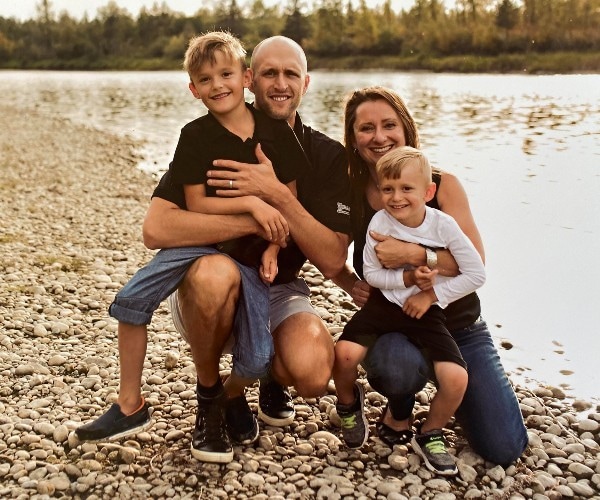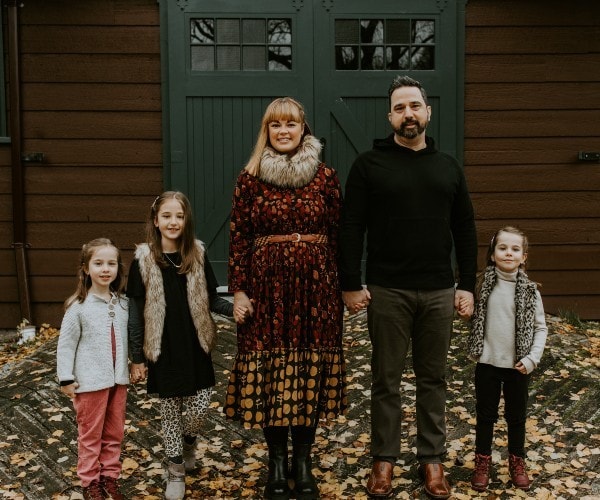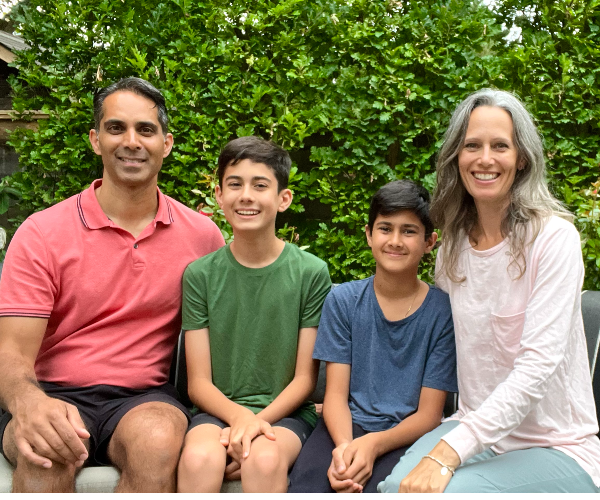For the past 18 months, the Royal Canadian Geographical Society has been working on a project it hopes will help its magazine’s 4.3 million readers — and their neighbours — do more to help slow climate change by lowering their carbon footprint.
The society, which publishes Canadian Geographic, Canada’s second most widely read magazine, will launch the pilot phase of its Live Net Zero Challenge on Sept. 19, which will see five Canadian families document their steps to cut emissions in various areas of their lives with the help of experts.
“What we’re trying to do is support Canadians to live a net-zero lifestyle, and at the same time fulfill our strategic commitment to a healthier planet,” says Aran O’Carroll, National Director, Government Relations and Environment for Canadian Geographic and the Royal Canadian Geographical Society.
For Canada to reach its emissions reduction target of 40% to 45% per cent below 2005 levels by 2030 and net-zero emissions by 2050, every sector in the country will need to meaningfully participate, O’Carroll said. That includes private citizens, who are responsible for more than 40% of the country’s emissions through their consumption and use of goods and services, the most recent Statistics Canada data shows.
“We believe there are a lot of people who want to do something about climate change and be part of the solution, but they just need a tiny bit of help to understand what drives their carbon footprint and how to reduce it,” said John Hovland, Executive Vice President of Canadian Geographic.
Over 10 weeks, the families, who were chosen from submissions from across the country, will undergo a series of challenges designed to reduce their emissions from commuting; electricity use; the home envelope, i.e. how well they are retaining their current heating or cooling; heating, ventilation and air conditioning (HVAC); and travel. The winner of the challenge, as chosen by the judges for cutting their emissions the most with the least expenditure, will receive an electric vehicle or cash equivalent.
Each family in the pilot will get $10,000 to help them achieve their emission reduction goals. Energy experts will be provided to work with the families on various aspects of the challenge and they will receive help applying for funding from federal, provincial and municipal governments and utilities. The Canada Greener Homes Loan, for example, offers grants of up to $5,000 and interest-free financing up to $40,000 to help Canadians make their homes more energy efficient and comfortable.
Families won’t be required to make a personal outlay of cash to win the challenge. Instead, they will be judged on creativity and doing the most with the least, Hovland noted. “It’s worth publicizing when a family can come up with ways of reducing their footprint for little or no cost versus another family dropping $50,000 on a heat pump and an induction stove,” he added.
There are a lot of people who want to do something about climate change and be part of the solution, but they just need a tiny bit of help to understand what drives their carbon footprint and how to reduce it.
Next year, the challenge will be expanded to include more families and give people following at home the tools required to lower their carbon footprint.
As the lead financial partner, Scotiabank will provide $450,000 over two years for the challenge. The Bank has committed to providing $25 million over 10 years to support non-profit and charitable partnerships that enable climate-related systems change and sector decarbonization. Scotiabank’s 2022 Net-Zero Pathways Report outlines the Bank’s commitment to net-zero operational emissions by 2030 and net-zero financed emissions by 2050.
“We’re proud to partner with Canadian Geographic, an organization that has been working to educate Canadians about the importance of reducing their carbon footprints for more than a decade,” said Meigan Terry, Senior Vice President & Chief Sustainability, Social Impact and Communications Officer at Scotiabank.
“Decarbonizing the residential real estate sector is key to Scotiabank’s achievement of net-zero financed emissions. Educating homeowners about enhancing home energy efficiency and energy retrofits, as well as how to find smart, cost-efficient ways to substantially reduce their energy consumption, can go a long way toward reaching our net-zero goal,” she said.
O’Carroll acknowledges that as much as it is challenging as a family to think about how to reduce your emissions meaningfully, and in the process make some difficult decisions, that’s equally true for Canadian corporations and governments.
“It is not an easy journey, but it can be done. We can get all kinds of ancillary benefits out of doing it, including a better world. But it’s a difficult transition and it’s really a pleasure to work with partners who are committed to this undertaking and thinking hard about it,” he said.
Taking up the challenge are:

Ania and Kit Richmond are committed to living a sustainable life for themselves, the environment and their two children. Having built one of the first passive energy homes in Calgary, the couple are now working toward making their home in Red Deer, Alta., energy efficient and their commute net zero.

Jennifer and Remo Pistor say the principle behind reducing their household carbon footprint is progress over perfection. Living in a 1940s house in New Westminster, B.C., with their three kids, the couple have been making small lifestyle changes to reduce their carbon footprint that are quickly adding up.

Andrea and Vineet Loewen-Nair and their two sons moved halfway across the country to live a more sustainable lifestyle. The family considerably limits their time driving and has renovated their 1920s house in London, Ont., to be more modern and energy efficient.

Vancouver residents John and Nancy Leung have adopted many impactful habits to reduce their household carbon emissions and live greener. The Leung’s and their two teenage children are following the three Rs — reduce, reuse and recycle — composting, and limiting their trips in the car to lower their carbon footprint.

Calvin and Janet Lai hope to improve the sustainability of their suburban lifestyle Stouffville, Ont., north of Toronto. While Calvin is looking to get an electric vehicle or e-bike to make his commute to work more carbon free, the couple is excited to discover ways to shrink their household carbon footprint.
Click the Live Net Zero Challenge to follow and root for your favourite family.

